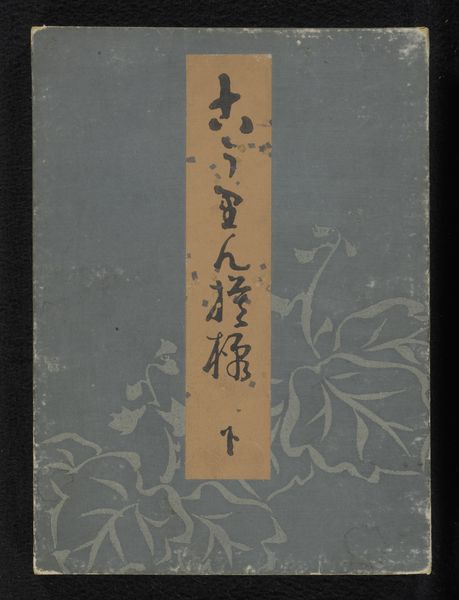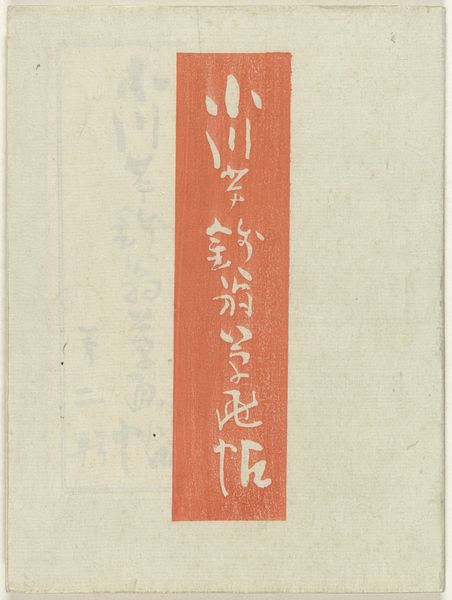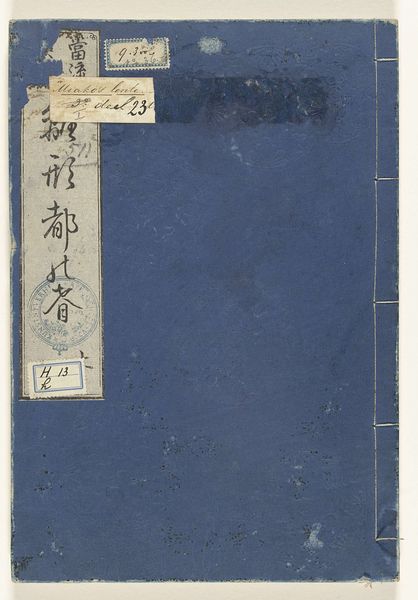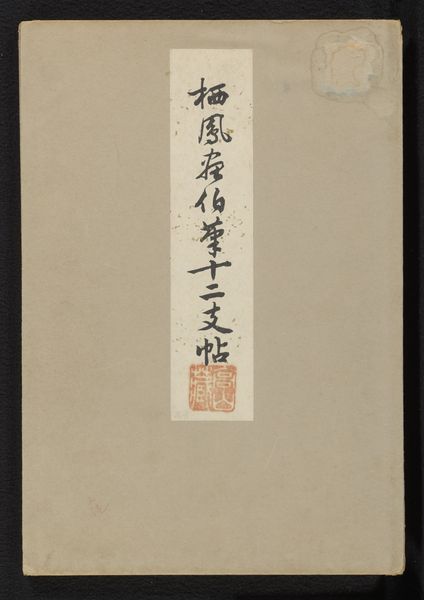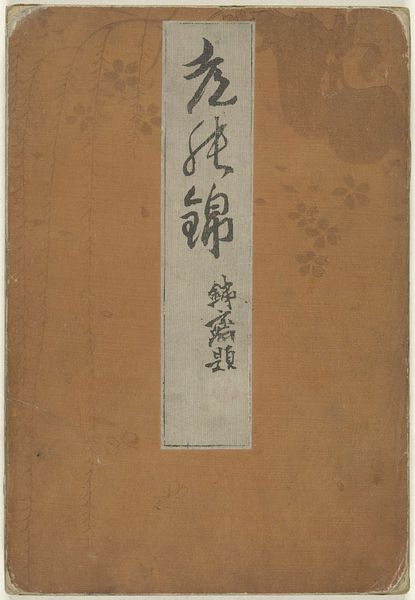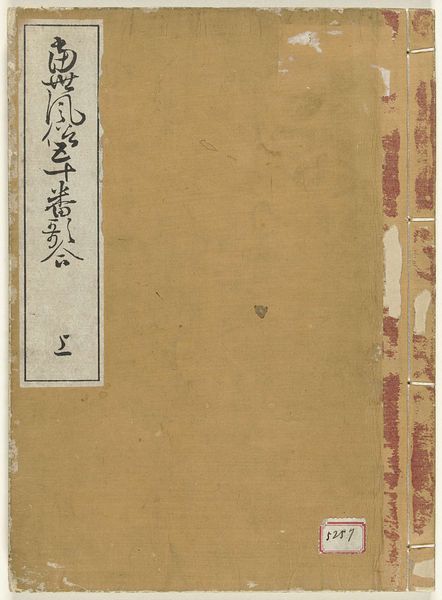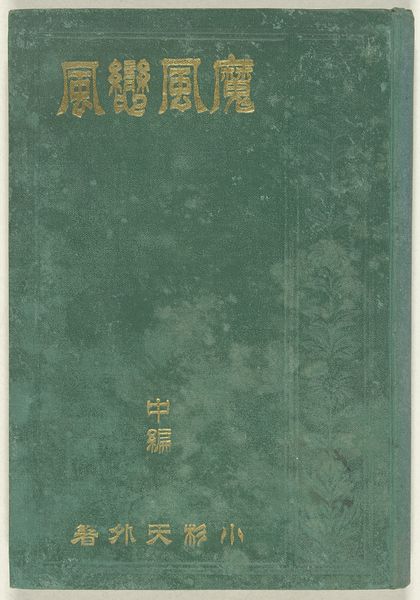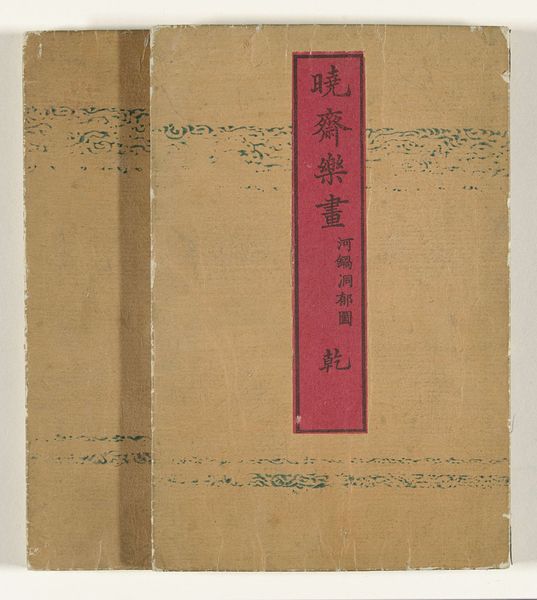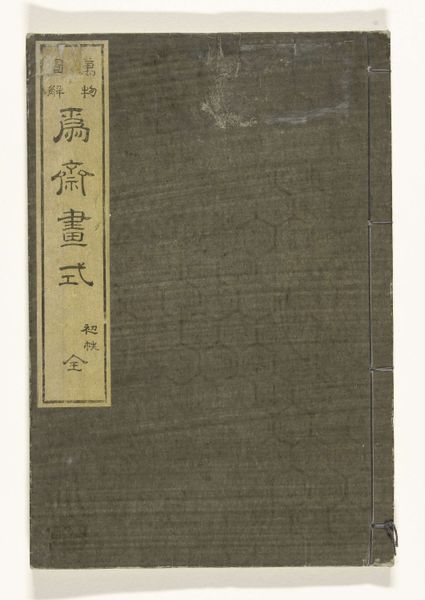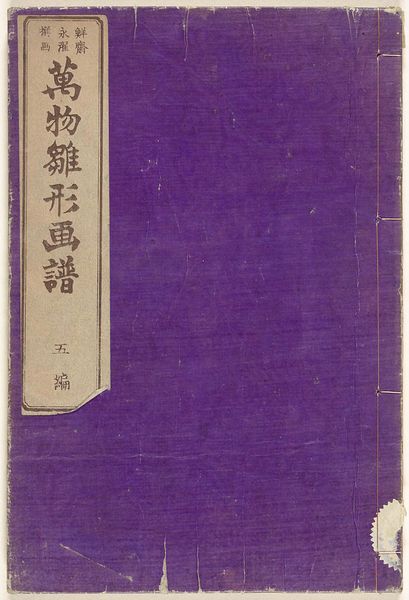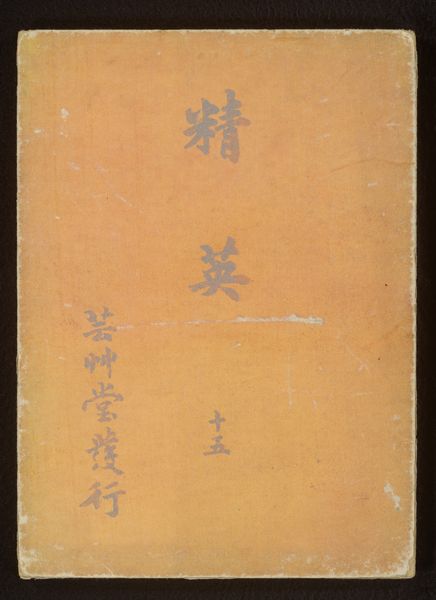
drawing, print, paper, ink
#
drawing
# print
#
asian-art
#
landscape
#
ukiyo-e
#
paper
#
ink
#
coloured pencil
Dimensions: height 317 mm, width 211 mm
Copyright: Rijks Museum: Open Domain
Curator: This print, titled “Gedetailleerde grote plattegrond van Edo,” created in 1866, offers a fascinating birds-eye perspective into the urban landscape of Edo, now modern-day Tokyo. It's part of the Rijksmuseum collection. Editor: My first thought is, "Wow, information overload!" I feel instantly curious about what secrets this old city plan holds. It's like a beautiful, intricate puzzle. Curator: Absolutely. The level of detail reflects Edo's booming urban culture and complex social hierarchy. Consider that city maps were carefully controlled, reflecting concerns about potential uprisings. Editor: Which is amazing. Someone cared enough to commit all those tiny lines to paper! It is so incredibly obsessive! What are the physical qualities, material qualities here? Curator: It's a print made with ink, likely from woodblocks onto paper. Ukiyo-e, prints such as this, became immensely popular, providing mass access to imagery and culture. Editor: Almost like their version of Google Earth! Except maybe more reliable. What I'm finding curious, though, is this impression of serenity it somehow conveys, despite all the detail. It's making me wonder what a contemporary of this work would've felt viewing it... maybe feeling grounded in time somehow, like “I am here,” and comforted to be so precisely rendered as part of this picture, this world... Curator: I think you are right. These prints became a source of great local pride. Edo was one of the largest cities in the world at the time, and visualizing its entirety surely contributed to its citizens’ sense of place and belonging. Its accessibility in print helped cultivate the sense of a shared civic identity, essential to its economy. Editor: Now you got me imagining folks pointing out their favorite teahouses or their cousin's shop... Each square becomes a whole world to be mapped, felt, dreamt through, relived over. Curator: Exactly! It's this intertwining of art, accessibility, and social significance that makes this print so compelling. It's a snapshot of a specific moment in time and also an index to Japanese values, such as its aesthetics. Editor: Seeing Edo frozen in time is a humbling, human experience...it's a reminder of a very important past. Thanks to prints like this, we, too, are invited into that intricate world! Curator: It reminds us that art is often much more than what hangs on a wall; art shapes the way we see our own communities, cities, nations— and, crucially, allows us to remember our own place in shaping art's trajectory too!
Comments
No comments
Be the first to comment and join the conversation on the ultimate creative platform.
